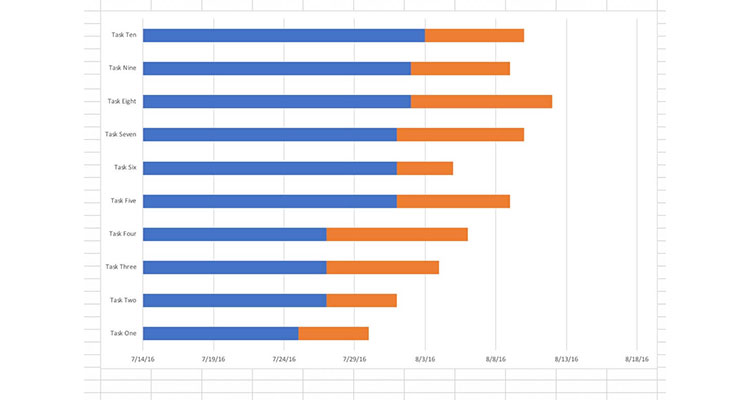Gantt Charts Are the Best Charts: Part 4

We covered the balancing act between the estimated time to complete tasks and the actual time in the previous installment. That leads to a related topic: the management of personnel, resources, and material.
Tipping the balance between estimated and actual back into your favor requires proper management of the people and resources on your project. A good Gantt chart app allows the project manager to view the status of both personnel and resources, and whether they’re available or committed to other tasks.
That availability or the lack thereof should be easily viewed by not just the project manager but also other stakeholders, allowing an overview of everyone’s workload and schedule throughout the project. Ideally, the app you’re using will allow you to view availability based on either hours per day or number of tasks per day and provide filters for the data to allow you to choose to see either occupied or unoccupied personnel during the periods you’re reviewing. Using filters will enable you to visualize your personnel’s workload better and make decisions about where to allocate them as needed.
It’s necessary to distinguish between personnel and resources, and what we mean by those terms in this context. Personnel are the actual people assigned to the project, and who receive tasks to complete. In contrast, resources are still people, but they are part of teams that lie outside the project manager’s purview. They are internal, employed by the same company but not involved with the project regularly, or they can be outside contractors or companies whose work contributes to the project at points along the way. Examples of resources could be an external programming contractor whose system programming will be used on the project or even the rigging and moving company hired to transport equipment from one site to another.
It may seem minor to differentiate between personnel and resources, but using a Gantt Chart app that distinguishes between them allows a higher degree of clarity when reviewing the timeline and making adjustments to the schedule. The reason for that is with the collaborative function on most Gantt Chart apps, the personnel on your team can give their input on the timeline when reviewing it on their laptop or mobile device. Examples of that include leaving comments, upload files, and of course, updating their status when starting or completing tasks. Also, Gantt Chart apps typically push out notifications to team members — whether daily or more frequently — with updates and reminders.
Meanwhile, resources are those people whose work impacts the project who aren’t under the project manager’s direct control. Their contributions are ordered for the project and need to be delivered at specific dates, but they operate on their own timetable. Indeed they may be running their own Gantt Chart. So whether it’s an outside programming company, or a rigging and delivery vendor, the project manager may well request status updates and confirmations along the way, but they’re not directly managed, so their personnel aren’t given access to the project’s Gantt Chart.
Finally, there’s the management of material. Generally, this is the easy part, as objects tend to be easier to manage than people. Having all the tasks laid out along the Gantt Chart timeline allows scheduling for the ordering and delivery of the material as it’s required. Knowing the lead times from your suppliers — everything from hardware to cabling is ordered along the way, keeping its delivery as close as possible to when your personnel will need it to perform their tasks. To be entirely honest, this doesn’t always go smoothly, which brings us back to the ability to manage and adjust the timeline and move around tasks and the people assigned to complete them as required.





